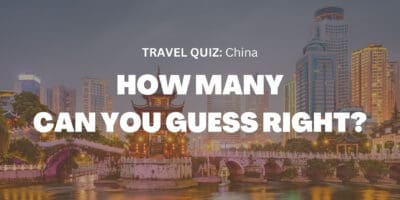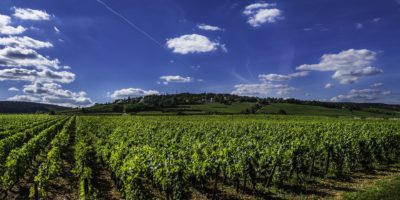A Walk in North Beach and San Francisco’s Barbary Coast
What to do and see in North Beach and the Barbary Coast
The oldest San Francisco buildings surviving the 1906 earthquake and fire are on this walk. And maybe the best stories of the city. This is my favorite place to show visitors.
The Barbary Coast and North Beach have everything from Mark Twain to San Francisco’s Gold Rush in the history of its buildings and today it attracts a very eclectic crowd, from Francis Ford Coppola’s movie studio, a dancer owner strip club, the highest end design firms, the Beatnik Museum, the City Lights Bookstore, to the best views from Coit Tower. San Francisco’s North Beach is both hip, gentile and lively. Telegraph Hill is a must visit site on its own. These areas can only be enjoyed by walking through them. The double-decker bus ride will not give you half the fun.
Where to Park in North Beach
This is a question even every local asks when they need to go to North Beach. The easiest and cheapest is the parking garage under Portsmouth Square. The entrance is on Kearny Street. It rarely fills up and is only one block from the TransAmerica Pyramid.
There is sometimes street parking, but this can lead to a lot of lost time and frustration. A more expensive lot is California Parking on Jackson near Kearny Street. Further into North Beach is the North Beach Garage on Vallejo near Stockton.
Time/Length – Ninety Minutes to Two hours at a leisurely pace – 1.2 miles (2 km) walk can easily be broken up with a food break at almost any time.
See detailed Interactive Printable Map of this walk on Google
Highlights on this walk
- TransAmerica Pyramid Building
- Mark Twain Building
- Hotaling’s Whiskey
- Sherman’s Bank
- City Lights Bookstore
- The Condor
- North Beach – Little Italy
- Washington Square
- Coit Tower
- Telegraph Hill
- Levi’s Plaza
- Exploratorium
Walking around North Beach and the Barbary Coast
When I have friends visit from out of town, I like to start my walking around the Barbary Coast and North Beach with the TransAmerica Building – specifically the corner of Washington Street and Montgomery Street.
TransAmerica Pyramid


View of Barbary Coast in 1860’s
If you look east on Washington Street, you will be looking over a half of a mile (700 km) to the Embarcadero and present-day shoreline. From 1850 to 1880 the shoreline was continually moved out. The piers stretched further into the bay (the piers lined up with streets like Washington, Pacific, Clay, Sacramento, Pine and California. And as the land was filled, in the streets were extended into the bay.) Much of today’s Financial District, which is east of Montgomery Street, was all bay in 1850, including the block on which the TransAmerica Pyramid sits.
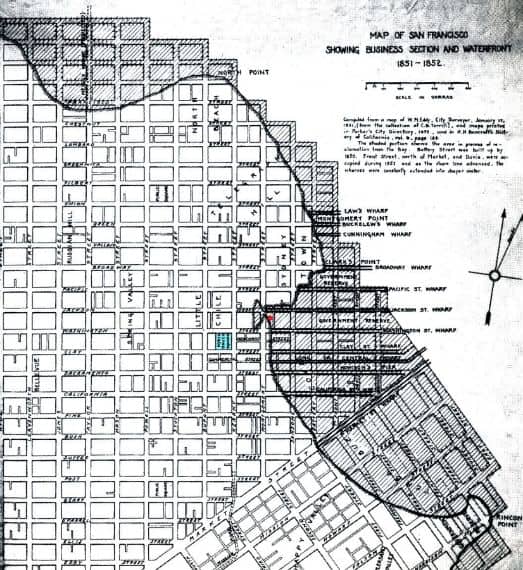
Map showing the amount of landfill in San Francisco in 1850’s
Prior to the TransAmerica Pyramid in 1972, the tallest building in San Francisco was the headquarters of the Bank of America. In 1969, the Bank of America moved into its new headquarters building at 555 California Avenue. TransAmerica Pyramid was finished in 1972 and it was 90 feet taller.
It is interesting to note that these two huge financial companies were both started in San Francisco by the same person, A.P. Giannini.

Original TransAmerica Headquarters
We start our walking tour by crossing Washington Street. On the far corner is an ornate three-story building. This was TransAmerica’s original headquarters until the Pyramid was built. It is now owned by the Church of Scientology. The lobby inside has been restored to how it looked in the 1930’s. If you enter the building quietly, they will let you look at the lobby.
Across Montgomery Street, on the corner, is another formal looking two-story building. It currently houses the Alioto law firm. The Alioto family has a long history in San Francisco with part of it owning the large Alioto’s restaurant on Fisherman’s Wharf and the Alioto fish processing plant also at the wharf. Joseph Alioto was San Francisco’s mayor from 1968 to 1976.
Mark Twain

Mark Twain and Alioto buildings
Next to the Alioto building is an 1860’s building with a sign saying Caessa Printing Co on the top. It was here on the second floor that in 1864 Mark Twain got a job as a newspaper reporter. It was said he hated the job and was fired after two weeks. But he stayed in San Francisco for several months after that.
It might have been a very foggy summer because Mark Twain is given credit for the quote, “The coldest winter I ever saw, was the summer I spent in San Francisco.”
There is one more story about Mark Twain’s time in San Francisco. And that story is that where the TransAmerica building now stands was an old bath house. It was there that Mark Twain and became friends and drinking buddies with a fireman whose name was Tom Sawyer.
Belli Buildings
On this same block going north a few buildings, are two buildings that were built in 1851 and from 1959 to 1996 housed the Melvin Belli law firm, (722 Montgomery and 726 Montgomery). They are two of the oldest buildings in San Francisco, but they are probably more famous because of being Melvin Belli’s offices. Melvin Belli was involved in many high-profile lawsuits involving high profile clients. Clients included; the Rolling Stones, Errol Flynn, Ferdinand Marcos, Zsa Zsa Gabor, Errol Flynn, Chuck Berry, Muhammad Ali, Jim and Tammy Faye Bakker, Lana Turner, Tony Curtis, Mae West, Sirhan Sirhan who assassinated Robert Kennedy, and Jack Ruby who murdered Lee Harvey Oswald.
Whenever he won a court case, Belli would raise a large pirate flag over his office building and fire off a loud cannon, mounted on his office roof, to announce his victory. It also announced a lavish party at the office. He happily paid a fine the city gave him as it is illegal to shoot off a cannon in the city limits.
Sherman’s Bank Building
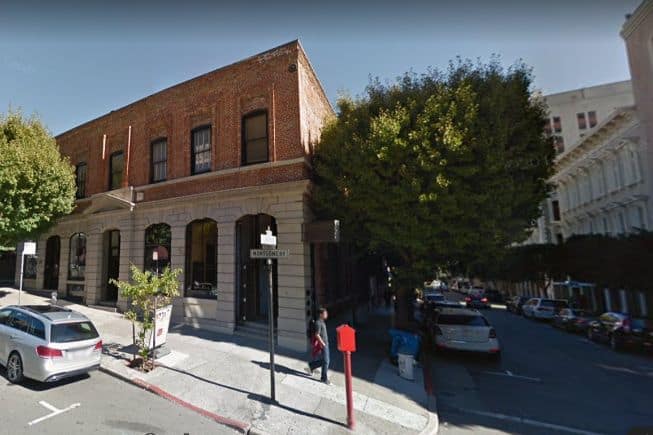
Sherman’s Bank Building
Just a couple of buildings from the Belli buildings, on the corner of Montgomery and Jackson streets (804 Montgomery), is another original building that survived the 1906 earthquake. In 1854, then Army Lieutenant William T. Sherman had arrived in San Francisco. He was hired by Lucas, Turner and Co. to open a San Francisco bank office and he built this building.
Sherman stayed in San Francisco for several years and became heavily involved with helping California to put down riots in the city as the Governor appointed him to head the State Militia. He, of course, went back to the Army and became a famous Civil War General on the Union side of the Civil War.
When I walk around these few still existing blocks of the original San Francisco of the 1850’s and 1860’s, I try to imagine the vibrancy and robustness of the day. In 1846, when Captain Montgomery planted his flag, only 120 people lived in San Francisco. Gold was discovered in 1858 and the city had already grown to 1,000. By 1860, the population had grown to 56,000 and San Francisco bcame one of the 25 largest cities in the United States after only12 years. San Francisco attracted many ambitious and sometimes troubled people. It is fun to note that at the same time (1854) as ‘General’ Sherman was in San Francisco, building a bank building, his future boss (and future US President) Ulysses S Grant, was fighting alcoholism and living six blocks away from the bank building in the What Cheer House, a temperance hotel.
Hotaling Whiskey
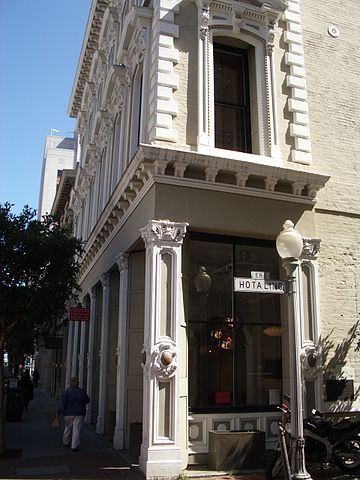
Old Hotaling Whiskey Warehouse
We continue our walk east on Jackson Street, in 1850 this was the shoreline of the bay with land on your left and a dock on the right. This was some of the first landfill. On the right-hand side there’s a small alley, now named Hotaling Place and on the corner is the old Hotaling Whiskey Warehouse. This was built in 1866 (the older buildings tend to be on the other side of the street.) It is fancy because the builder, Anson Hotaling, was planning on opening a hotel. But before he finished it, he was in the whiskey business and it became his warehouse.
The 1906 earthquake and fire made the building famous. While the earthquake was massive and lots of buildings were destroyed it was the four-day fire after that destroyed most of the 25,000 buildings that were lost. Fires sprang up all over the city and spread relentlessly as the firefighting equipment was limited. To get more water to the downtown area a water hose was stretched one mile (1.6 km) from Fisherman’s Wharf to Jackson Street.
As the fire moved toward this area, it was decided that if the whiskey warehouse caught on fire it might cause a massive explosion. Thus, the hose was used to save all the buildings within a block or two of the warehouse. Which is why this area has almost all of the 1850’s buildings still left. Some people said that the earthquake and fire were God’s punishment for San Francisco’s ‘wild-ness’. That led to this immediate humorous poem from Charles Field
“If, as they say, God spanked the town for being over-frisky, why did He burn His churches down and spare Hotaling’s whiskey?”
French Consulate

Original French Consulate building
Across the street are two of the oldest surviving buildings in San Francisco built in 1852 (the one older building is the Mission Dolores from 1791). Both of these builds served as the French Consulate in the 1860’s and 1870’s (the taller one was the Consulate for Chile and Spain in the 1850’s.) Before the main part of the city moved east to the Financial District and Union Square, the main banking and governmental functions were in this neighborhood.
The one story building next door was built in 1852 as well for a French sea captain as a home and office. The building stayed in family ownership for the next 100 years.
As you look around you will notice most of these buildings are now occupied by companies which are in the design and decoration business (at the high-priced end). Usually some interesting items can be seen in the windows (probably best to just do ‘window shopping’).
As we move up the block on our left, we will come to Balance Street. It is noted that this might be the shortest official street in San Francisco. But maybe more interesting, is the fact that Balance Street was built on top of a ship named Balance. The Balance was captured from the British in the War of 1812, and then sailed around the southern tip of South America into San Francisco Bay in 1949 and docked here where the street is. It stayed right there and served as a storeship. In 1851 it was broken apart and used as landfill and became Balance Street.
Gold Street
Walk up Balance Street to Gold Street. Gold Street is another narrow ‘back alley’ street. During the gold rush this was the major location of gold assay offices where miners could turn mixed gold nuggets into money. Head left on Gold Street to go back to Montgomery Street. You will go past Bix a long time San Francisco favorite swanky super club with live jazz. The building on the corner (90 Gold Street) is the headquarters of AngelList, a well-regarded organization of early venture funding for entrepreneurs.
We walk uphill on Montgomery Street past the fashionable Cigar Bar & Grill. When you get to the corner of Montgomery Street and Pacific Avenue look right. You will see the entrance to Quince. This is one San Francisco’s 3 Michelin star restaurants – with prices to match the awards.
Terrific Street and the International Settlement
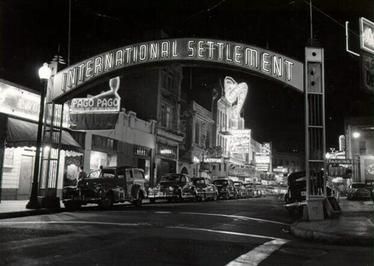
International Settlement in the 1950’s
Turning left you will see two one story metal pillars on the corners of Pacific Avenue. From 1939 to 1960 those pillars had a large sign welcoming people to the International Settlement. It was just one block of Pacific Avenue, but from 1880 until 1960 this block contained three versions of an ‘entertainment’ area.
From 1880 until 1906, this block was all bars, dance halls and brothels. Then it all burned down in 1906. Within three months, a whole new set of buildings replaced the old ones and the nickname Terrific Street was used – the nickname was meant to be for the quality of the music produced. The first jazz clubs on the West Coast were on this block. The local press commented on the bright lights of Terrific Street lighting up the sky for much of San Francisco to see. The illegal gambling and prostitution were no longer on the street. But in 1921. Prohibition came and it all folded. The buildings stayed and became cheap offices and warehouses.
With the end of Prohibition in 1933, the third version arose when entrepreneurs came back and opened up all the old buildings into clubs and restaurants — House of Blue Lights, Spider Kelly’s, the Arabian Nights lounge (at 592), the Gay ‘N Frisky club (at 590), the House of Pisco (at 580), the Monaco (at 560), The Barn (at 539), The Hurricane (at 533), plus the Lucca, Sahara Sands, and the Barbary Coast Club.
The Moulin Rouge was at 555 Pacific Avenue. This was the building that housed the most popular club on the old Terrific Street, the Hippodrome dance hall. The building is now an art store, and its basement still displays an old tunnel from its past said to be used to escape police and heading into Chinatown at one point. The outside of the building still has the artwork from its old days as the Hippodrome.
Today, this block it houses designers and law offices.
Zoetrope Studios
When you reach the corner, you will be back at Columbus Avenue. On one of the corners is one of the most interesting old buildings of San Francisco. Officially named the Sentinel Building, it is often referred to by its current owner, Francis Ford Coppola. In the 1950’s, it housed the hungry i comedy club in the basement. Since 1972, it has housed Zoetrope Studies which Coppola started with George Lucas of Star Wars fame. It is interesting that the folk singing group, The Kingston Trio, had bought the building and were using it, just before they sold it to Coppola.

Zoetrope Studio Headquarters
We can walk up Kearney Street for one block to ‘prove’ that there are still some left-over red-light places in the neighborhood. You will see a couple of ‘gentlemen’s clubs on the way to Broadway. Before you turn left at Broadway, look up the hill of Kearny Street. This is the start of Telegraph Hill. This block of Broadway took over for the International Settlement in the1960’s to 1990’s. There are still a couple of clubs left, But it also has the Beatnik Museum and normal restaurants.
The Condor
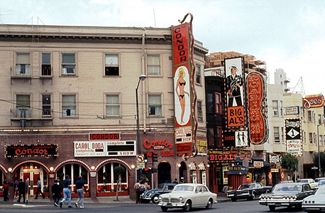
The Condor in 1973
On the Columbus Avenue corner of Broadway is The Condor. The photo here shows the Condor in 1973 – the blond woman in the skimpy bikini was Carol Doda. The Condor was the first establishment to challenge the topless dancing laws of San Francisco. Her first topless dance was in 1964. The Condor and Big Al’s next door look pretty much the same today as they did 50 years ago. Carol Doda became famous for winning lawsuits against the City of San Francisco which kept trying to stop her topless (and later nude) dancing at the Condor.

Carol Doda
Carol Doda and The Condor were just part of the overall San Francisco culture as a city that was open to many different ideas. Carol Doda did most of her dancing in the 1960’s and 1970’s. This is the period of time in which the hippies came to San Francisco. The peak was 1967 with the Summer of Love in San Francisco when 100,000 young hippies arrived in the city. The 1960’s and 1970’s, were the time when the first modern skyscrapers were built downtown, in San Francisco LSD was being experimented with by both hippies and the CIA (it was legal until 1968), and Art Rock was inventing Venture Capital and funding Silicon Valley companies like Intel and Apple.
City Lights Bookstore
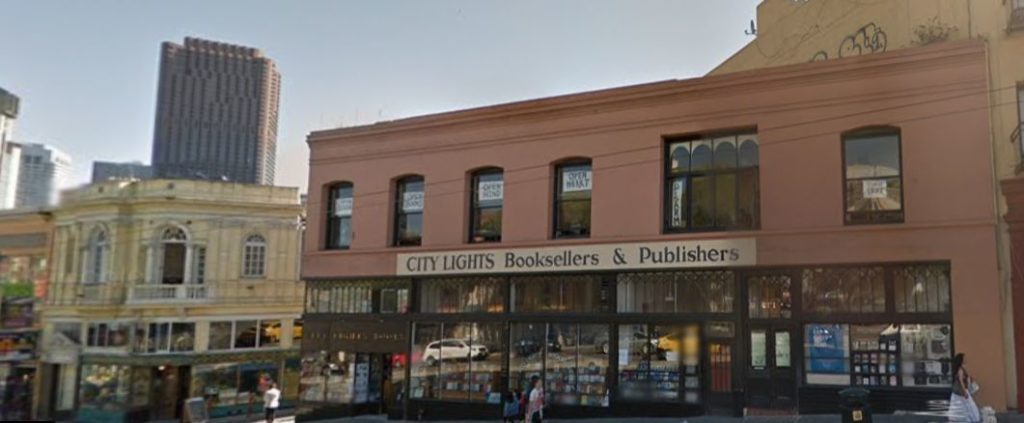
City Lights Bookstore
On another corner of Columbus Avenue and Broadway is the City Lights Bookstore. It may be small, but The City Lights Bookstore is often in the top ten most famous bookstores in the world (along with Shakespeare and Co located in Paris.) It was the first all paperback bookstore in the US in 1953. But it became famous for a poem it published. Lawrence Ferlinghetti, co-founder of the bookstore, published Allen Ginsburg’s Howl from this building. They were all sued for obscenity. The two men, and the store, became famous for the California Supreme Court Free Speech victory.
North Beach and Little Italy

Free Speech Flying Books
Before you continue into North Beach proper, note the small white ‘items’ hanging above another corner of Columbus and Broadway. If you look closer, you will see the items are actually upside-down books. At night the books light up and they shine words onto the sidewalk symbolizing the free speech lawsuits of the bookstore. While you are on the corner checkout the building behind which has two great murals on it. At this point, we head north on Grant Avenue, into North Beach which was named for a beach that was there in the 1860’s and 1870’s, but was filled in to create more land to build on.
The Godfather
On Grant Avenue we pass The Saloon, ‘the oldest bar in San Francisco’, which opened in 1861. It is really a hole-in-the wall place. The Caffe Trieste is on the next corner with Vallejo Street. Most of the screenplay for The Godfather was written by Francis Ford Coppola while sitting in this cafe.
Down Vallejo Street we get back to Columbus Avenue and we see a wonderful old Catholic church, St. Francis of Assisi. If you have time, stop inside and look around at the relics they keep there. If you are hungry, might be time for a stop at Molinari’s Delicatessen. Probably the most famous Italian delicatessen in San Francisco. I have been known to buy their pastrami sandwiches, huge and delicious.
The next block of Columbus Avenue has a number of Italian restaurants with sidewalk service, I have eaten at most of them at some time, and like them all. If it is a bit chilly outside and you really want an authentic San Francisco Italian experience, on the next block is the North Beach restaurant. If you go inside, you will be looking around for the real Godfather eating there. The food is old world Italian.
Green Street
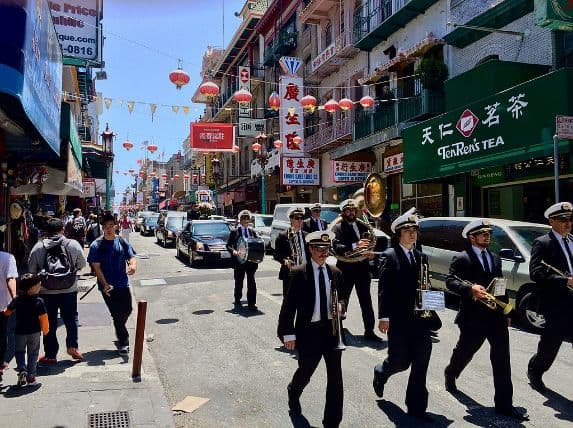
Green Street funeral parade and band
Take a quick detour on Green Street. Go west to see the Green Street Mortuary. It is a rare mortuary that is famous for its funeral band and parades. A tradition of some Chinese is to parade the casket to all the places the deceased often frequented. The parade usually includes a couple blocks of marching down Grant Avenue.
Also, on that same block is the theater where Beach Blanket Babylon has been performed continuously since 1974. It is a live music revue with characters wearing huge creative headpieces. Quite different and worth a night.
Green Street goes in the other direction to the top of Telegraph Hill. Just on the other side is the building where television was ‘invented’ — Philo Farnsworth transmitted the first television image there in 1927.
Washington Square

Saint Peter and Paul Church
If you go north on Stockton Street, you will head into Washington Square. The stunning church, Saint Peter and Paul Church, on the far side is famous as the location of America’s most famous marriage in the 1950’s.


DiMaggio- Monroe wedding photo
The most popular restaurant on Washington Square is Mama’s. Almost always has a line, if there isn’t one go in. But if the wait looks too long, go across the street for San Francisco’s best focaccia at Liguria Bakery. Note – they often sell out as well.
Pizza – try Tony’s Pizza Napoletana. It is hard to beat. Forbes Magazine named it the best pizzeria in the United states in 2014. In what seems like the ‘thing to do on Washington Square’, they only make a certain number of each pizza. So, they can run out too. With all these food choices aren’t you glad you walked this far.

Wild parrots in Washington Square
Washington Square also has a flock of wild parrots which live all over Telegraph Hill. They seem to have been started when a couple of pets got free. It turns out the climate in this area is compatible with them and they do not have too many predators.
Telegraph Hill and Coit Tower

Coit Tower on Telegraph Hill
Now for your one climb, Telegraph Hill and Coit Tower. Head up Filbert Street. Take your time, the climb is worth it. You will get some of the best views of San Francisco.
Even without Coit Tower, from the top of the hill, you can see out the Golden Gate and with a telescope you can see the ships are sailing into port.
The name Telegraph Hill comes from its use. Sailing ships took a long time before they came around the corner of the bay and dock in San Francisco. And people downtown wanted to know what was coming before it got there. So, in 1849, the city built a building, called a semaphore, on the top of Telegraph Hill which had ‘wings’ somewhat like a windmill. These wings could be put in different ways to signal to downtown San Francisco what ships were coming in. The people that needed to, could get ready to meet the ship at the pier. The signals ‘telegraphed’ what ship were coming.
The electric telegraph we all think of actually ended the usefulness of Telegraph Hill. It allowed near instant messages from much farther away.
Lillie Hitchcock Coit added the tower on Telegraph Hill in honor of its fireman. Lillie Coit died in 1929 and put in her will to use her estate to build ‘something of beauty’ in San Francisco. She was a great supporter of fire fighters. The tower was finished in 1933. The tower’s design is that of a firehose. The views from the bottom level are good, but if you have time, go to the top.
Levi’s Plaza
At this point I would give you two choices. You can head back into North Beach and hit one of the Italian restaurants. Or, you can do an adventure most tourists (or even locals) ever do. You can walk down the Filbert Street Stairs into Levi’s Plaza. The steps will take you into a residential neighborhood which has no street access, just narrow hillside sidewalks and very steep steps. It is quite fun.
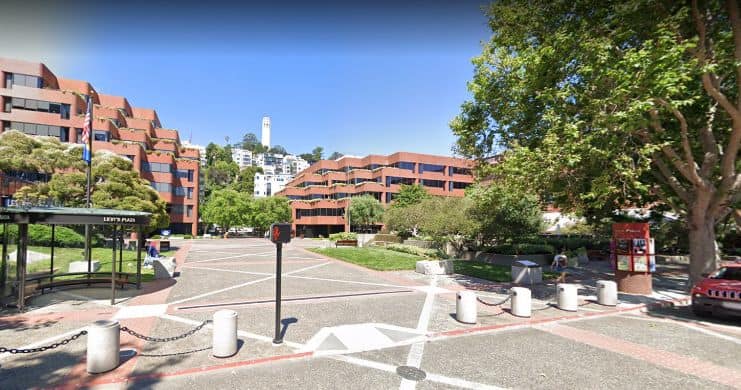
Levi’s Plaza
Levi’s Plaza is where the headquarters of Leve Strauss is located. If you walk to the Embarcadero you will be across from the Exploratorium, a great hands-on science experience for people of all ages.

Line historic streetcar from Milan
If you are hungry, try the Fog City Diner. You are also on the F Line where San Francisco has imported and is using historic street cars from around the world. (The one in the photo is from Milan.) You can ride to Fisherman’s Wharf or back into downtown.
Planning a trip to Paris ? Get ready !
These are Amazon’s best-selling travel products that you may need for coming to Paris.
Bookstore
- The best travel book : Rick Steves – Paris 2023 – Learn more here
- Fodor’s Paris 2024 – Learn more here
Travel Gear
- Venture Pal Lightweight Backpack – Learn more here
- Samsonite Winfield 2 28″ Luggage – Learn more here
- Swig Savvy’s Stainless Steel Insulated Water Bottle – Learn more here
Check Amazon’s best-seller list for the most popular travel accessories. We sometimes read this list just to find out what new travel products people are buying.


